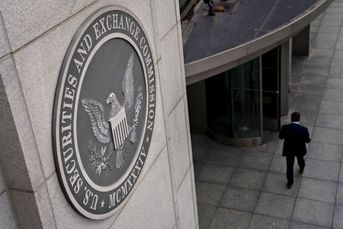Myths about the Investment Company Act on its 75th anniversary

It's time to set straight misconceptions about the law that regulates mutual funds and other investment companies.
Sunday marks the 75th anniversary of the enactment of the Investment Company Act of 1940, the law that regulates mutual funds and other investment companies. The Act has been critical to the success of investment companies.
The coming anniversary provides an opportunity to dispel myths about the Act.
1. The Act was the first law to regulate investment companies. The Revenue Act of 1936 provided that if a mutual fund met certain regulatory tests, the fund would not be subject to tax. The tests included diversification requirements, a limit on short-term trading and a ceiling on fund ownership of portfolio companies.
2. Enactment was inevitable due to the revelation of abuses. In March 1940, the Securities and Exchange Commission released a report that highlighted abuses in the fund industry and included a draft bill. Observers such as Barron’s, the New York Times and the Wall Street Journal unanimously predicted legislation would not be enacted. These predictions made sense: The New Deal had run out of steam, the SEC was under attack, the nation was focused on defense preparedness and it appeared investment companies would oppose legislation. However, investment companies surprised observers and worked aggressively for enactment of the SEC’s bill with modifications.
(More: “Top 10 most trusted mutual fund companies”)
3. Funds wanted legislation to regain public confidence and help the defense effort. These factors may have played a part, but the key to funds’ support for the legislation was pure economic self-interest. Closed-end funds, the largest part of the industry, were desperate to obtain the same tax treatment mutual funds received in 1936. Closed-end funds cut a deal whereby they supported the SEC’s bill in return for the SEC’s help in obtaining tax legislation. Mutual funds, the smaller part of the industry, wanted to strengthen their brand by enacting into law uniform standards in areas such as daily redemptions, a ban on senior securities and limits on borrowing.
4. The Act granted extensive powers to fund directors. The Act granted fund directors only four powers (approval of the advisory and underwriting agreements, selection of outside accountants, and valuation of portfolio securities). Moreover, the Act did not permit directors to relax statutory standards in key areas such as fund borrowing and fund transactions with management. In recent years, fund directors’ responsibilities have exploded, mostly because the SEC has adopted a large number of rules requiring approval of transactions by directors.
(More: “Hidden dragons: 10 funds with high China exposure”)
5. The Act focused solely on investor protection and ignored systemic risk. In the 1930s, there were allegations that one cause of the 1929 stock market crash was investment companies dumping securities into a falling market. The Act granted the SEC explicit authority to investigate and make recommendations to Congress regarding any problem associated with a substantial increase in the size of investment companies.
Matthew P. Fink is former president of the Investment Company Institute and author of Rise of Mutual Funds: An Insider’s View (Oxford University Press, 2d ed. 2011).
Learn more about reprints and licensing for this article.





